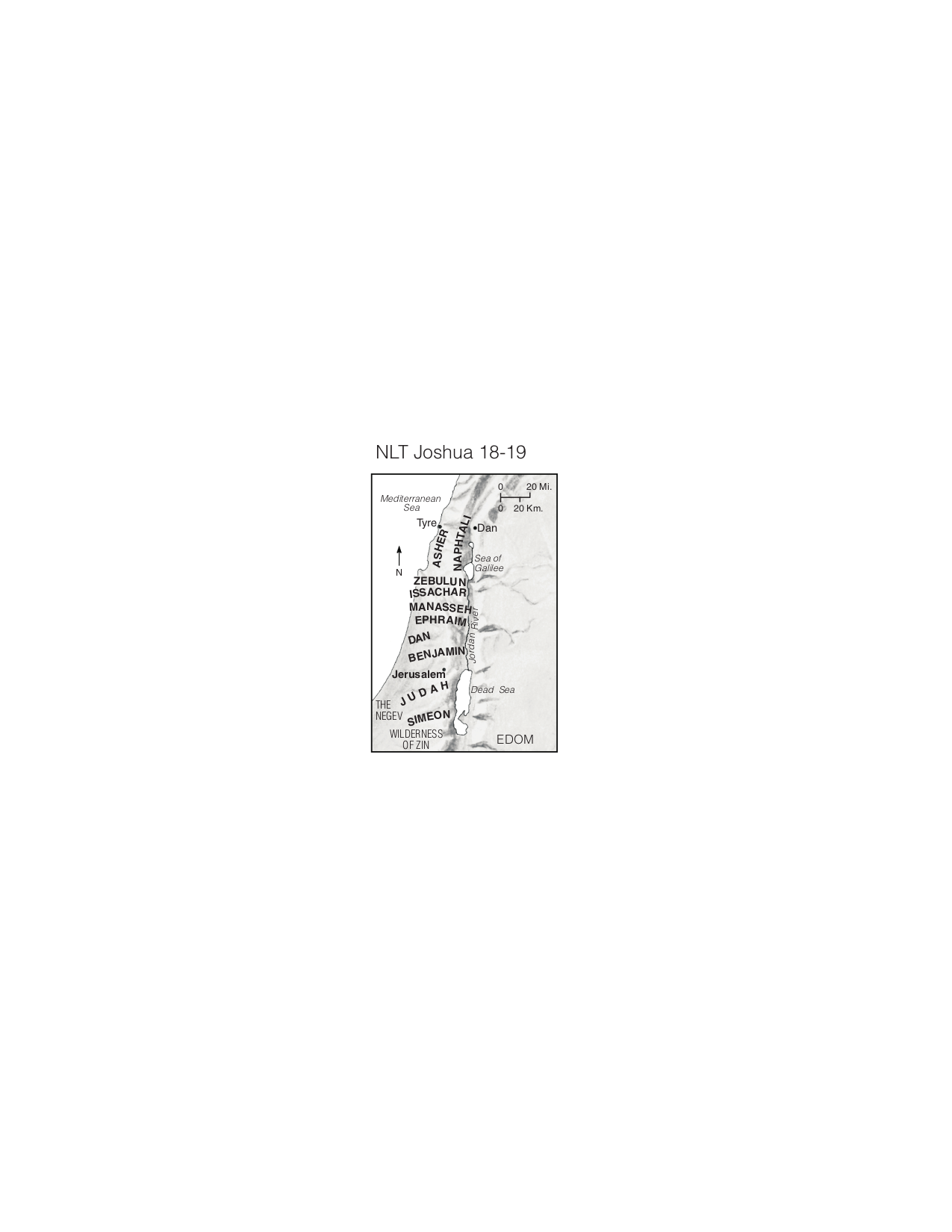
Location of Zebulun
This map shows the location of Zebulun in relation to the other tribes west of the Jordan.
Open Bible Data Home About News OET Key
OET OET-RV OET-LV ULT UST BSB MSB BLB AICNT OEB WEBBE WMBB NET LSV FBV TCNT T4T LEB BBE Moff JPS Wymth ASV DRA YLT Drby RV SLT Wbstr KJB-1769 KJB-1611 Bshps Gnva Cvdl TNT Wycl SR-GNT UHB BrLXX BrTr Related Topics Parallel Interlinear Reference Dictionary Search
A B C D E F G H I J K L M N O P Q R S T U V W XY Z
ZEBULUN, Tribe of
Tribe descended from Zebulun, the tenth son of Jacob and the sixth borne to him by Leah (Gn 30:19-20). His tribe was divided into three clans named after his three sons: the Seredites, the Elonites, and the Jahleelites (Gn 46:14; Nm 26:27). At the census taken on the plains of Moab, the number of men in the tribe over 20 years of age and fit for military service was 60,500 (Nm 26:26-27).
The territory allotted to Zebulun’s tribe was in central Canaan and included the valley of Jezreel, but the boundary lines given in Joshua 19:10-16 are difficult to trace because only the tribe’s southeastern and eastern borders are indicated. The western border on the Mediterranean side is not clearly defined. In the blessing of Moses (Dt 33:18-19), Zebulun, along with Issachar, “shall draw out [lit. suck] the abundance of the sea,” which would seem to indicate that Zebulun would have access to the sea (Mediterranean) and therefore to the mercantile and maritime trade.

Location of Zebulun
This map shows the location of Zebulun in relation to the other tribes west of the Jordan.
The boundary details, however, do not bring Zebulun in touch geographically with the sea, in apparent contradiction to Genesis 49:13. But this reference may not imply actual contact with the Mediterranean. Zebulun’s position did enable it to profit by maritime trade because the great caravan route to the sea passed through Zebulunite territory. In addition, Zebulun’s “lot,” with its fruitful fields and valleys, ensured olive groves, vineyards, and splendid harvests. In 1 Chronicles 12:40 the tribe was able to provide rich provisions for David. Throughout the centuries the tribe maintained its identity.
Clearly, then, the tribe of Zebulun held a strong position among its tribal neighbors around Galilee and was settled more securely. In contrast to the tribes of Asher and Naphtali, who continued to live among the Canaanites (Jgs 1:32-33), the Canaanites constituted a minority in Zebulun. Throughout the period of the judges the tribe was very active. For example, the victorious army in the battle of Kishon was composed of men of Zebulun and Naphtali (4:6-10); in the Song of Deborah, Zebulun is praised as a people that puts its life in jeopardy to the point of death (5:18). According to Judges 6:35, the men of Zebulun took part in Gideon’s struggle with the Midianites on the plain of Jezreel and fought with outstanding valor. The judge Elon belonged to the tribe of Zebulun (12:11-12), and since Galilee was in the territory of Zebulun (Jos 19:15), Ibzan of Bethlehem was probably also a Zebulunite. Another indication of the strength and importance of Zebulun’s tribe within the united kingdom period is found in the mention of Zebulun’s fighting force as the largest of the western tribal armies that fought under King David (1 Chr 12:33).
In the NT there are two references to Zebulun. The first notes Zebulun as a region into which Jesus, the great light, made an appearance (Mt 4:13-15). The second mention of Zebulun appears in the list of the 12 tribes in Revelation 7:8 after Issachar.
See also Zebulun (Person).